Ghosts Of Graceland: Chicago Cemetery Filled With Haunting Tales
CHICAGO — After being closed for a month following a summer storm that brought down hundreds of trees, some graves and monuments, Chicago's famed Graceland Cemetery reopened Sept. 9. In all, nearly $250,000 in damage was done during the derecho storm that included 130 mph wind gusts.
A popular destination since it opened in 1860, the graveyard in the Uptown neighborhood has seen even more visitors in 2020 during the coronavirus pandemic. Management told the Chicago Tribune that daily visits have gone from 40-50 per day to 200-300 since March.
There are numerous reasons why Graceland Cemetery has been a must-see for the past 160 years. Many enjoy the countless trees, especially during the fall months as the pretty colors at the certified arboretum pop. A reflecting lake, along with unique art, architecture and landscaping, are also highlights throughout the cemetery's 121 acres.
Of course, being that it is a cemetery, the biggest draw is probably the many famous burial sites. Though filled with its fair share of deceased residents that were well-known during their lifetimes, there is also a number of buried people that have become more legendary in death at Graceland Cemetery. Let's look at some of the graveyard's best urban legends and ghost stories.
'THE ETERNAL SILENCE' OF DEXTER GRAVES (1789-1844)
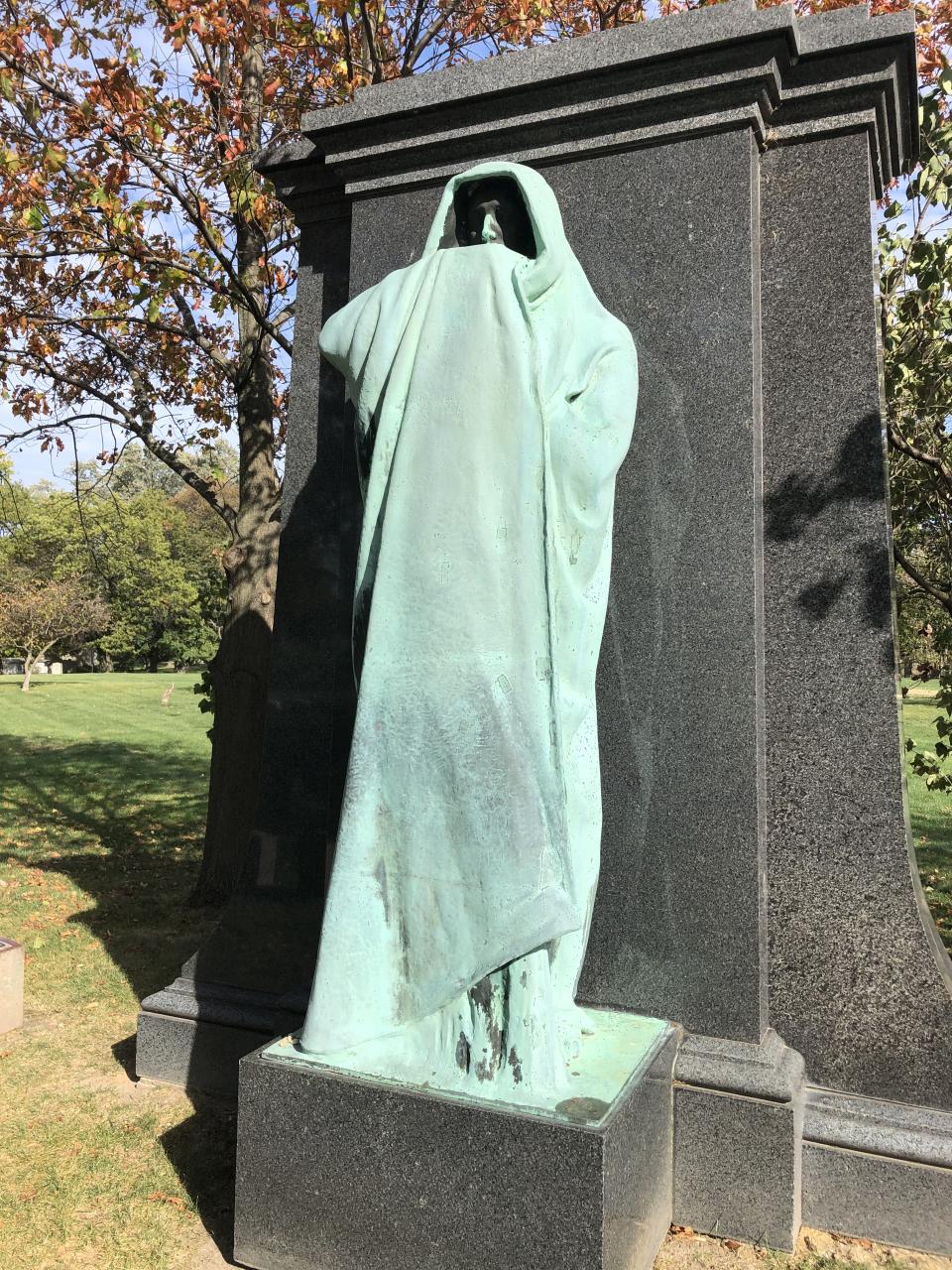
It has a number of different names — "The Eternal Silence," "Dexter Graves Monument," "Statue of Death." Whatever you call it, if you see the bronze sculpture with a black granite backdrop at Graceland Cemetery, you will never forget it. Created by American sculptor Lorado Taft in 1909, the statue stands at the tomb of Dexter Graves (1789-1844).
According to Graceland Cemetery, Graves was one of the first settlers who, as an inscription on the back of the slab reads, "brought the first colony to Chicago, consisting of 13 families, arriving here July 15, 1831 from Ashtabula, Ohio, on the schooner Telegraph." As Graves died 75 years before the statue was created and 16 years before the cemetery open, his body was relocated from its original resting place at the old City Cemetery, which is the present site of Lincoln Park. There's a lot more information out there regarding Graves' son, his will, a horse sculpture that was supposed to accompany the statue, etc. The folks at Mysterious Chicago Tours delve into all of that here.
What makes this one of the most popular sites in the cemetery are some of the folktales. According to one, if you look into the eyes of the statue's hooded figure, you will see a vision of your own death. Another states that the statue cannot be photographed, but hundreds of photos on the internet, and one accompanying this story, would say otherwise. The way the figure partially hides his face with one arm also spooks people out.
THE HAUNTED TOMB OF LUDWIG WOLFF (1836-1911)
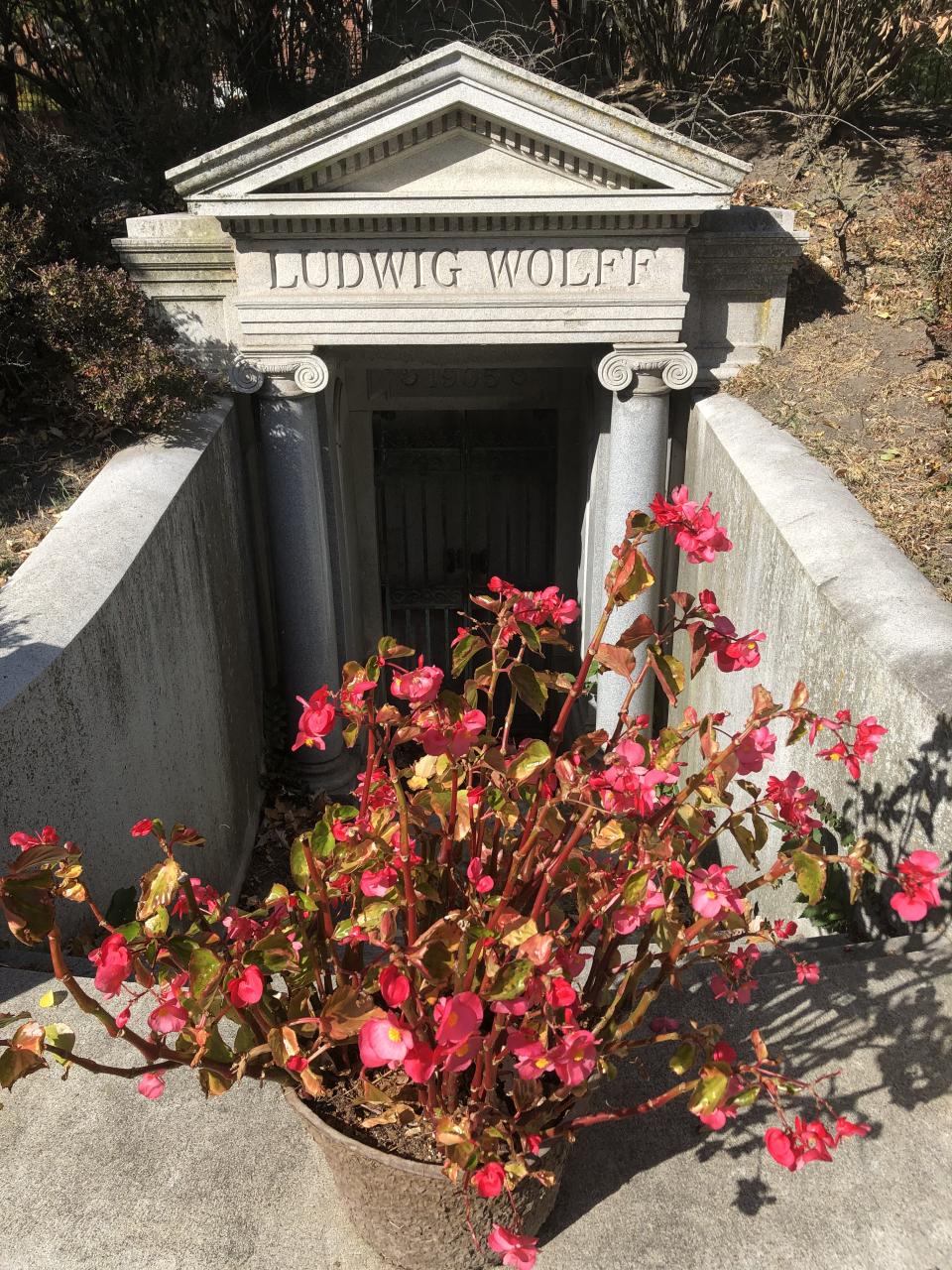
During his lifetime, Ludwig Wolff was rumored to be afraid he would be buried alive. According to Ursula Bielski, who gives "History and Haunting" walking tours of Graceland Cemetery, a vent that sits atop a built-up mound above his tomb includes a ventilation system with actual bells and whistles intended to prevent it from happening.
It has also been said that residents of the apartment buildings on Montrose Avenue, located directly across from the Wolff tomb, have seen the ghost of Wolff's wolf hound pacing in front of the entrance, especially on nights with a full moon. As Graceland Cemetery has been a popular destination of coyotes for many decades, it might be easier for the doubters to explain this phenomenon.
SCI-FI TRIBUTE TO ARCHITECT BRUCE GOFF (1904-1982)
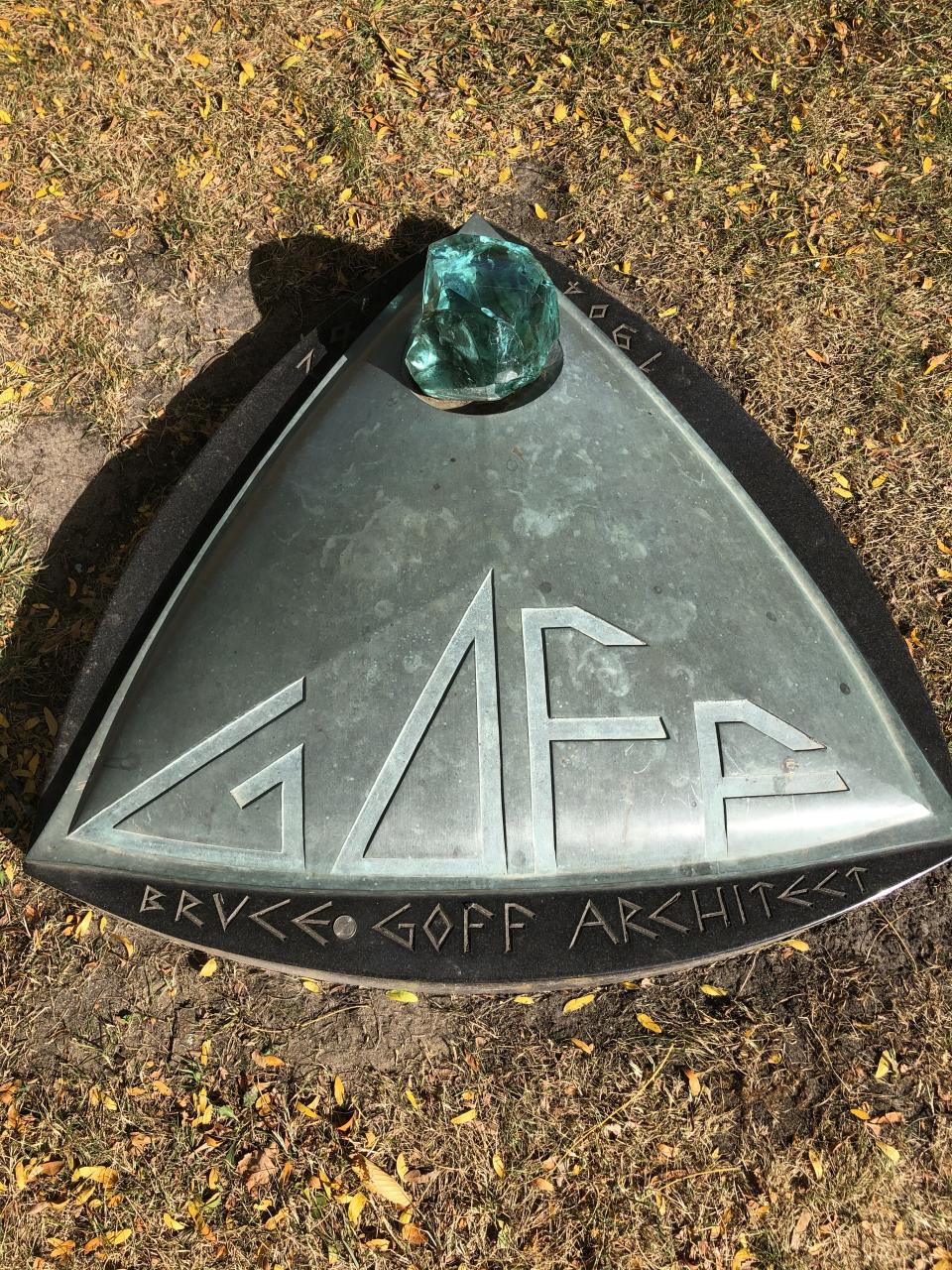
There might not be anything supernatural about the marker for Bruce Goff's remains at Graceland, but it still gets a lot of foot traffic and attention. Goff, who died in 1982, was mentored by Frank Lloyd Wright, became a noted architect in his own right with projects like the Ruth Ford house in Aurora and the Los Angeles County Museum of Art's Pavilion for Japanese Art, while teaching at the University of Oklahoma.
A former student designed the marker that incorporates a glass cullet fragment salvaged from the ruins of the Joe D. Price House and Studio. It's been described as "sci-fi" and "futuristic."
FOOTBRIDGE TO THE BURNHAM FAMILY ISLAND
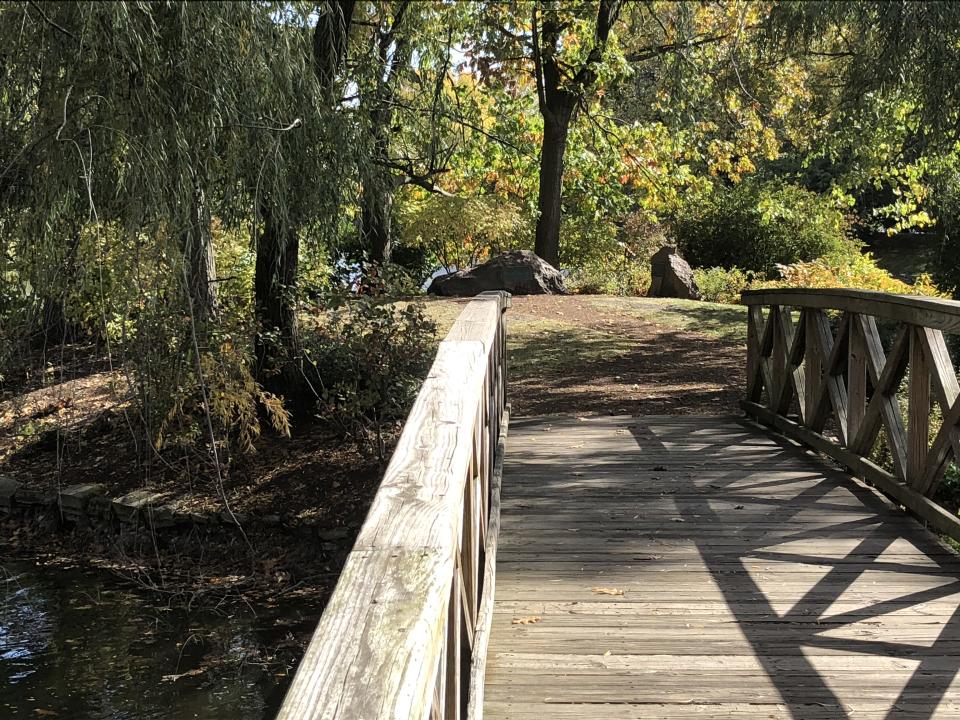
The popular book, "The Devil in the White City," by Erik Larson, shined a lot of light on the many happenings during the 1893 World's Columbian Exposition in Chicago. The book, based on real characters and events, includes the viewpoint of Daniel Burnham, credited as one of the fair's designers, combined with the story of H.H. Holmes, the first modern serial killer.
At the lake in Graceland Cemetery is a footbridge, which is a popular destination for families as many fish, ducks and other wildlife live in its waters, often begging for bread and food. Across from the footbridge is an "island" that houses the remains of the Burnham family. The folks at Windy City Ghosts state that the ghost of Daniel Burnham has been seen frequently over the years. According to the legend, a man stands there on the bank of the island, with his hands in his pockets. He has been seen at the fairgrounds in Jackson Park and at his old offices at the Rookery Building on LaSalle Street, where he designed the World's Columbian Exposition.
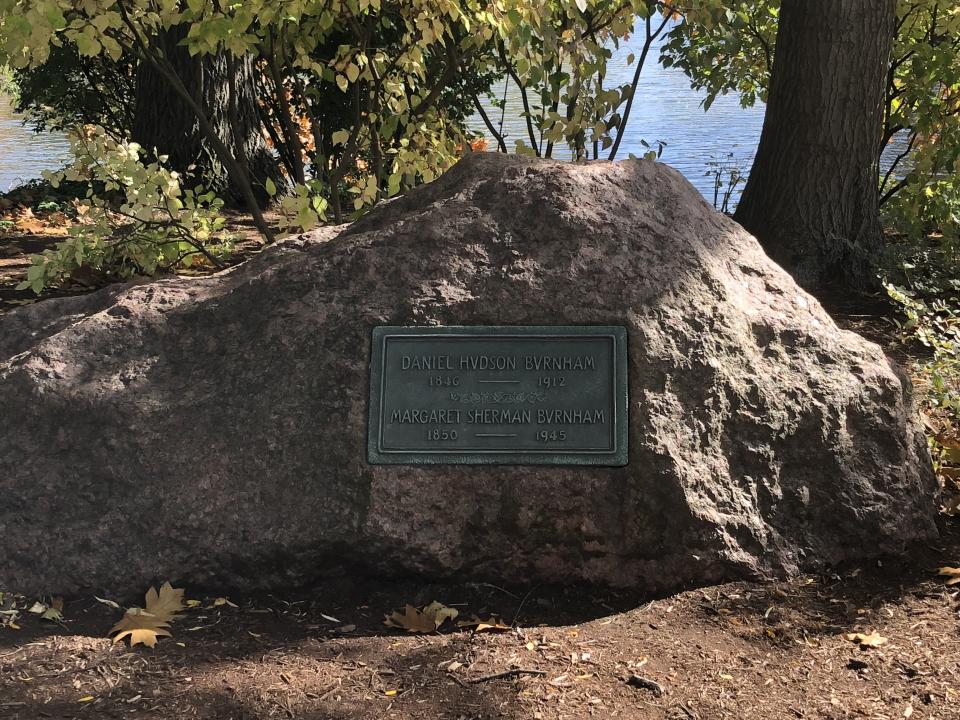
THE 'GREEK TEMPLE' AT THE PALMER MAUSOLEUM
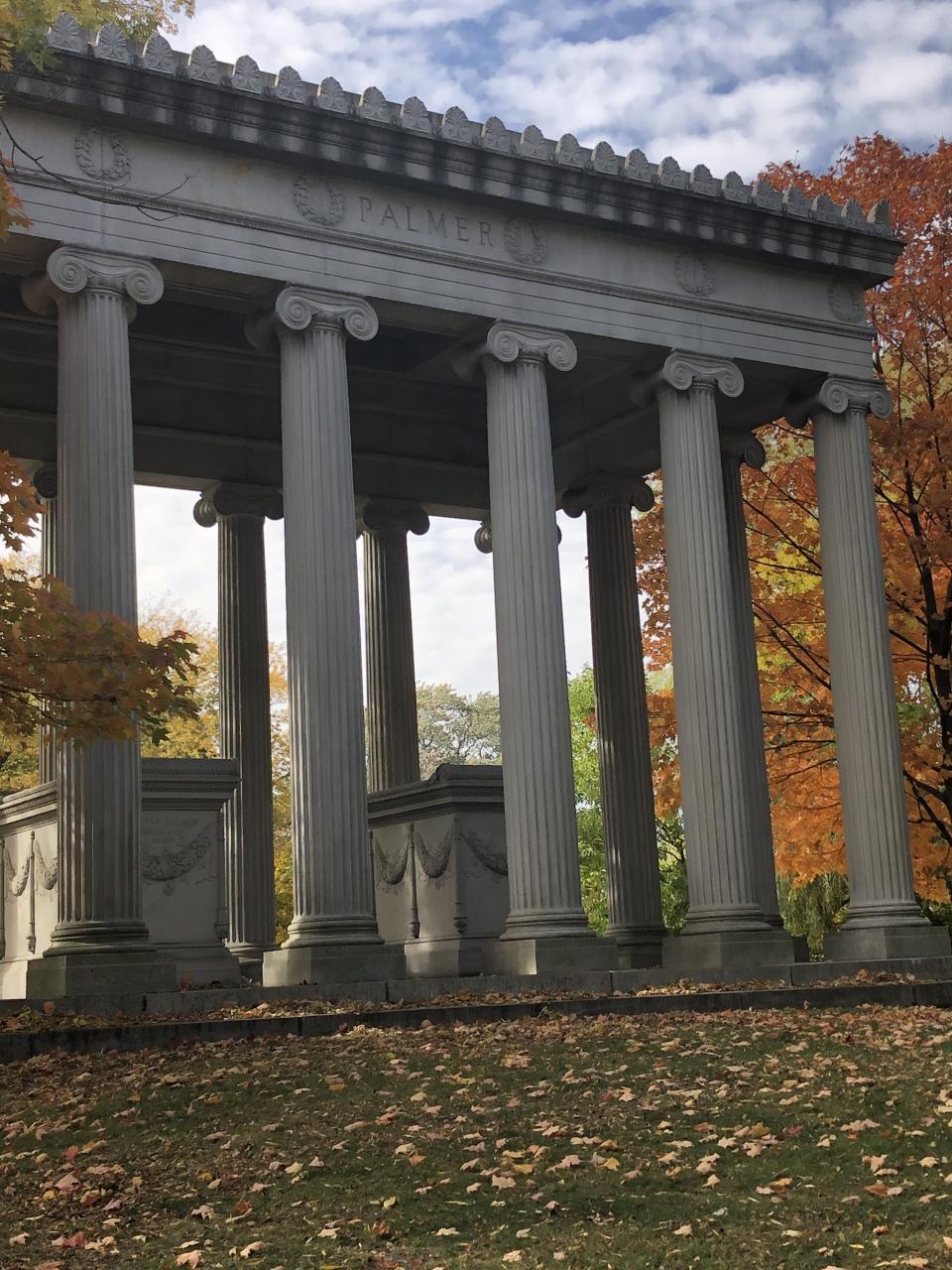
If the fact that a scene in a supernatural horror film was shot at Graceland doesn't spook one out, then maybe none of these stories will do the trick. "Damien: Omen II," a 1978 film that was the second installment of the "Omen" series, used a grand Greek temple mausoleum with twin sarcophagi to shoot the scene. The remains of the wealthy couple, Potter (1826-1902) and Bertha Palmer (1849-1918) are located here.
According to Graceland Cemetery, "Potter Palmer pioneered customer satisfaction in his dry goods store, with money-back guarantees, merchandise on approval, and attractive store displays. He sold his successful business to Marshall Field and Levi Leiter, and became successful in real estate. (You’ve heard of the Palmer House, no doubt)."
The temple was designed by McKim, Mead & White of New York designed the temple, as well as Bertha’s parents' French Gothic tomb across the road.
Many visitors over the years have reported that standing in the mausoleum fears them with dread. The folks at The Lineup describe it as being "eerily quiet and even colder than the rest of the cemetery."
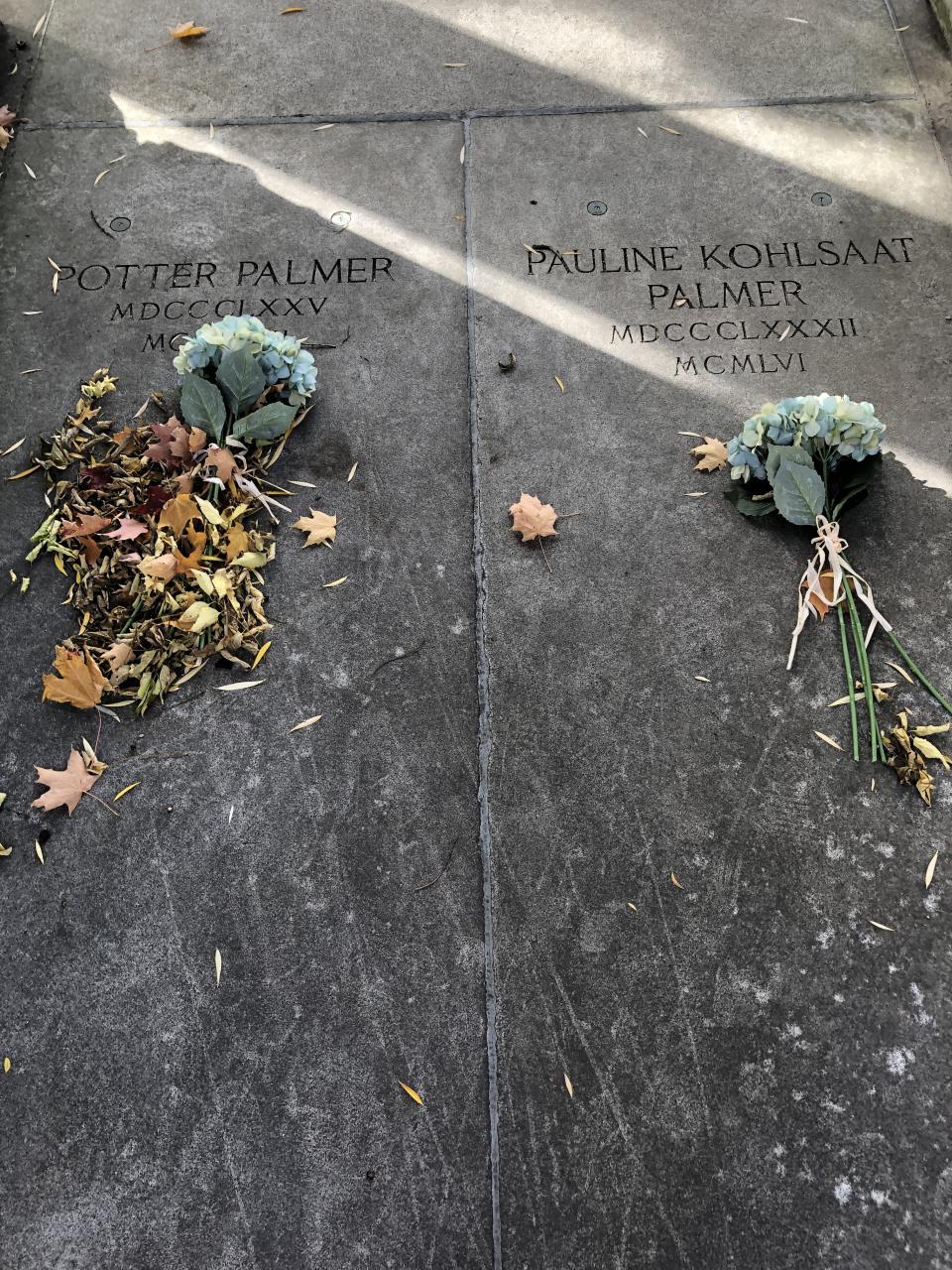
THE 'CRUSADER' SCULPTURE FOR VICTOR LAWSON (1850-1925)
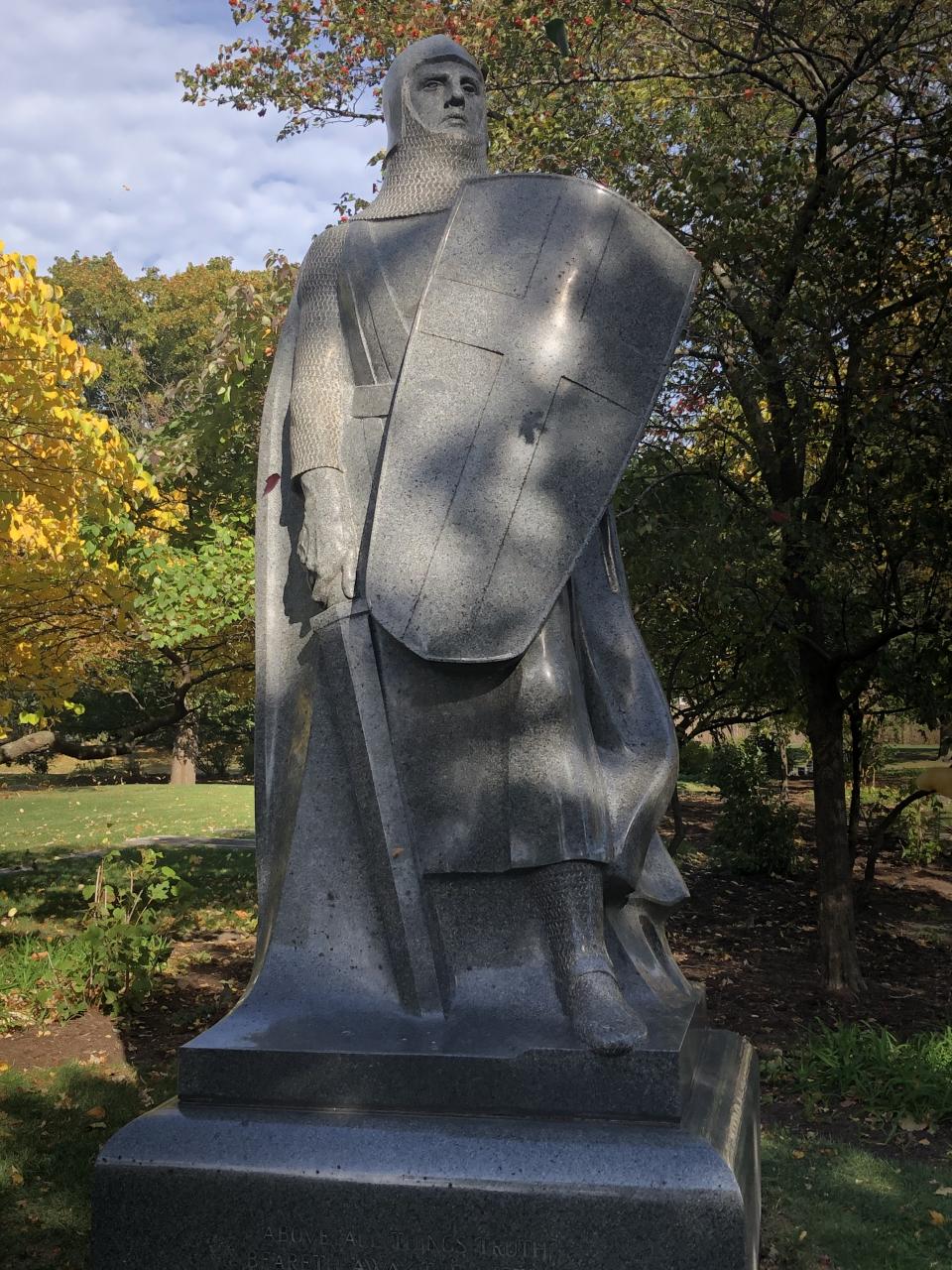
Lorado Taft, who created the aforementioned sculpture, "The Eternal Silence," also built another amazing work at the cemetery. "Crusader" stands guard over the grave of newspaper publisher Victor Lawson (1850-1925), whose Chicago Daily News pioneered in sending reporters throughout the world for news. Lawson contributed anonymously to many of Chicago’s charitable causes, and even his grave is unmarked, except for the statue and the phrase, "Above all things truth beareth away the victory." According to Graceland Cemetery, it refers to a story in the Book of Esdras, King James Bible Apocrypha, about a discussion of what is strongest.
The "Crusader" is a medieval knight who seems ready to come to life at any moment, and is used to symbolize the character of Lawson. Standing more than 13 feet tall, it was carved out of a solid block of dark granite.
THE GETTY TOMB
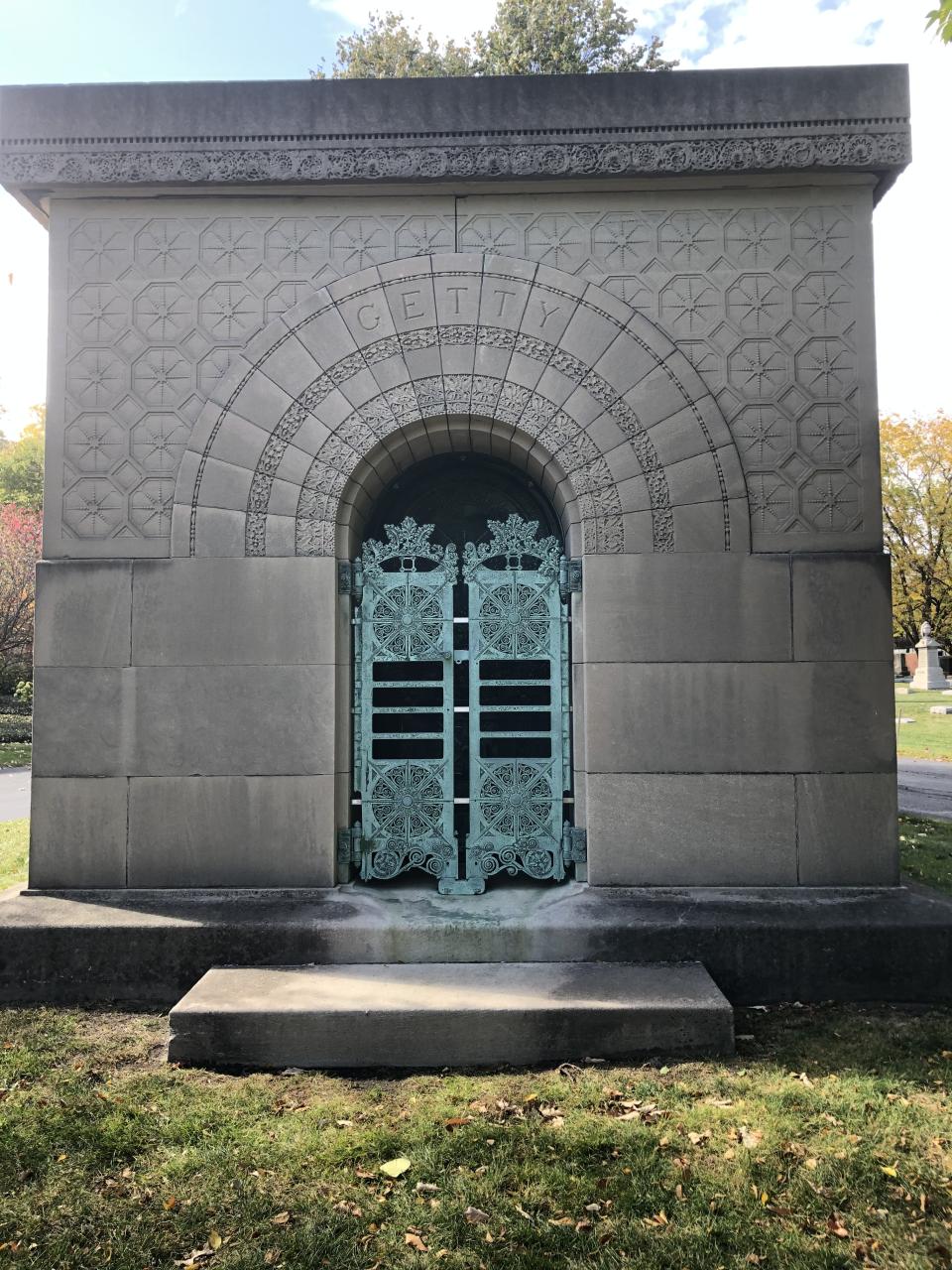
Designated at Chicago landmark in 1971, the Getty Tomb is another famous grave at Graceland Cemetery. It is "considered the pièce de résistance of all the fine monuments in Graceland," and was commissioned by lumber merchant Henry Harrison Getty for his wife, Carrie Eliza. Designed by Louis Sullivan, who is also buried at Graceland.
What strikes visitors about the Getty Tomb the most, in addition to the famed architecture, is that the gates outside the tomb seem to lead to nothing but a black emptiness.
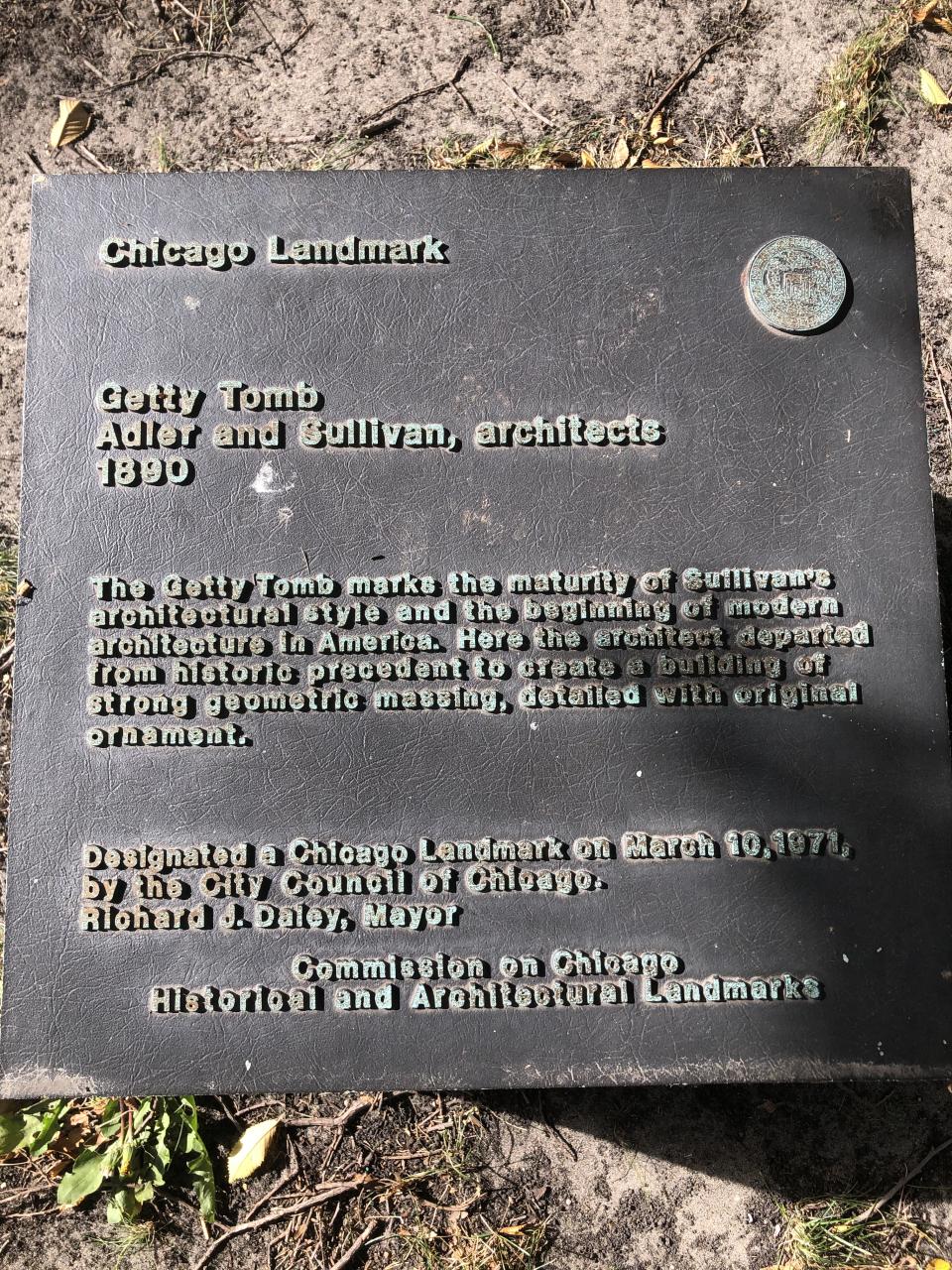
THE GIRL IN GLASS — INEZ CLARKE (1873-1880)
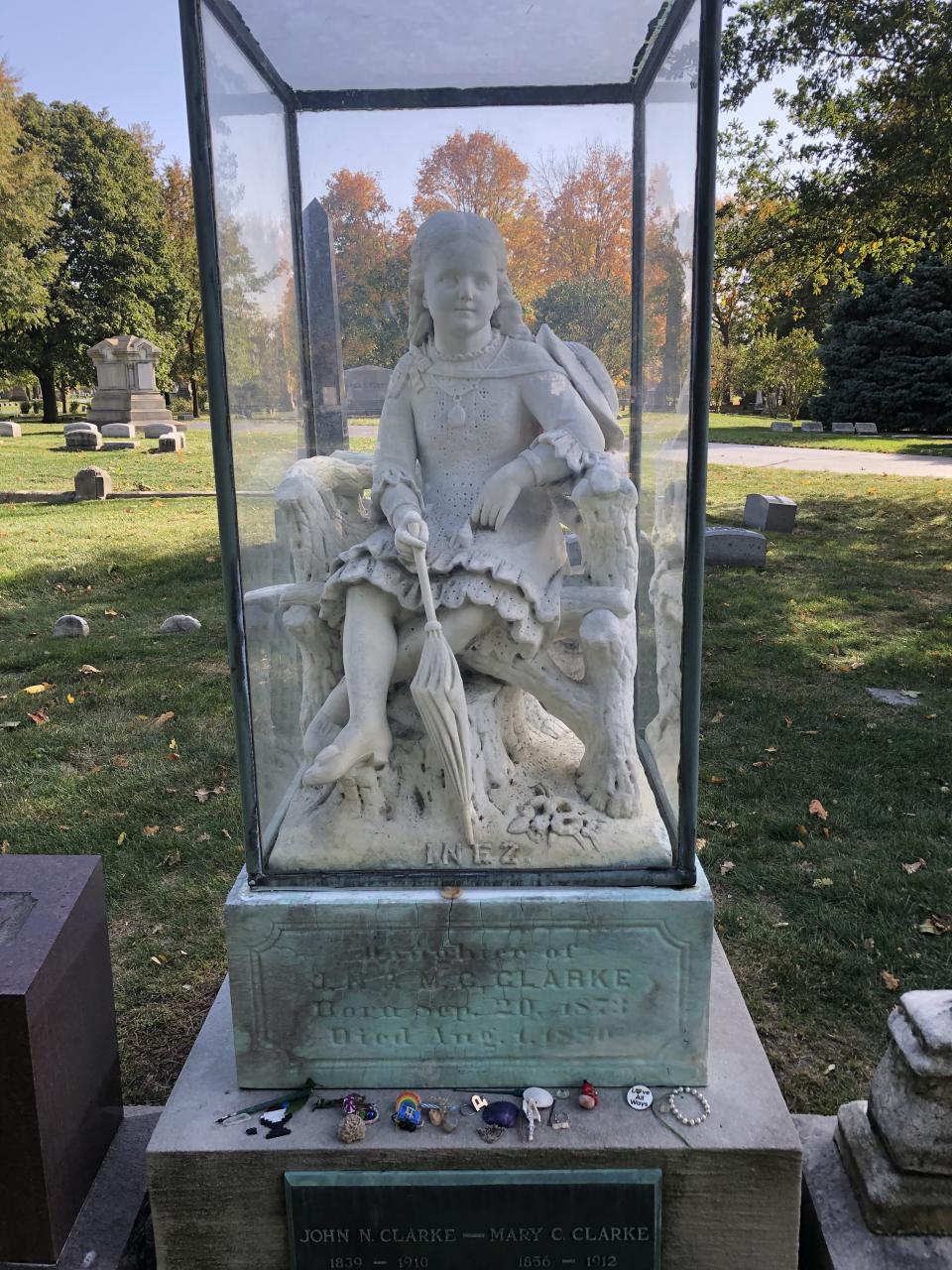
It shouldn't be a surprise that in a cemetery filled with mysteries that one of its most famous burial sites is rumored to be its most haunted. Inez Clarke (1873-1880) is memorialized with a glass-enclosed statue where her remains are reported to be located. Among the issues, though, is that there was no one living in Chicago in 1880 by that name. Based on extensive research done over the course of decades, it is now believed that the girl is Inez Briggs, the daughter of Mary C. Clarke from a previous marriage.
The ghost stories revolving around Inez are numerous. One story, as told by Find A Grave, is that she died when struck by lightning during a picnic or when she was locked outside during a thunderstorm. Because of this, some have said her statue disappers during thunderstorms because Inez is afraid of lightning. Another story says that Inez died of tuberculosis and that the statue has been seen crying. It has also been rumored that her spirit wanders the cemetery and is only seen by other children.
While some of these stories have been debunked by historians, it hasn't stopped people from reporting weird occurrences when visiting Inez. They often leave toys, stuffed animals or coins on the monument.
Want more spooky stories and urban legends from Illinois? Find them here.
This article originally appeared on the Chicago Patch

